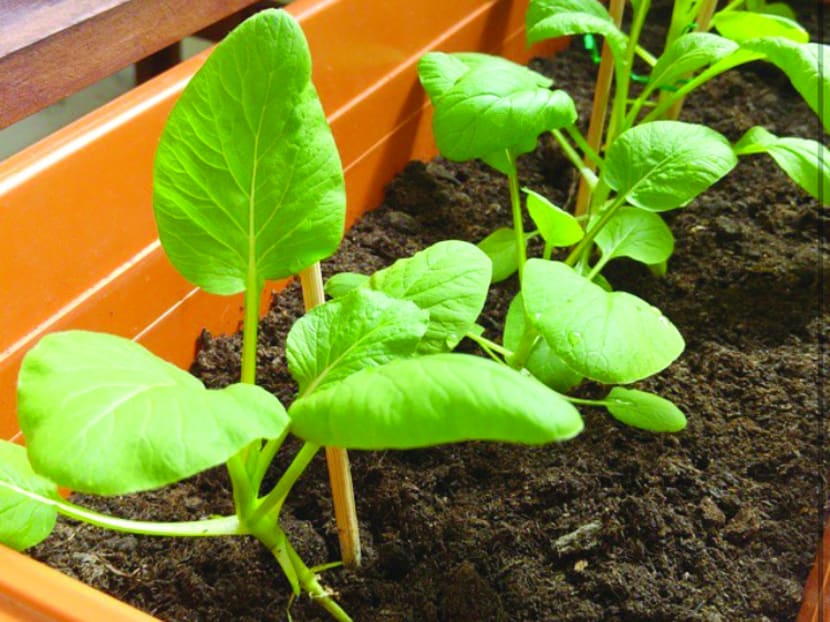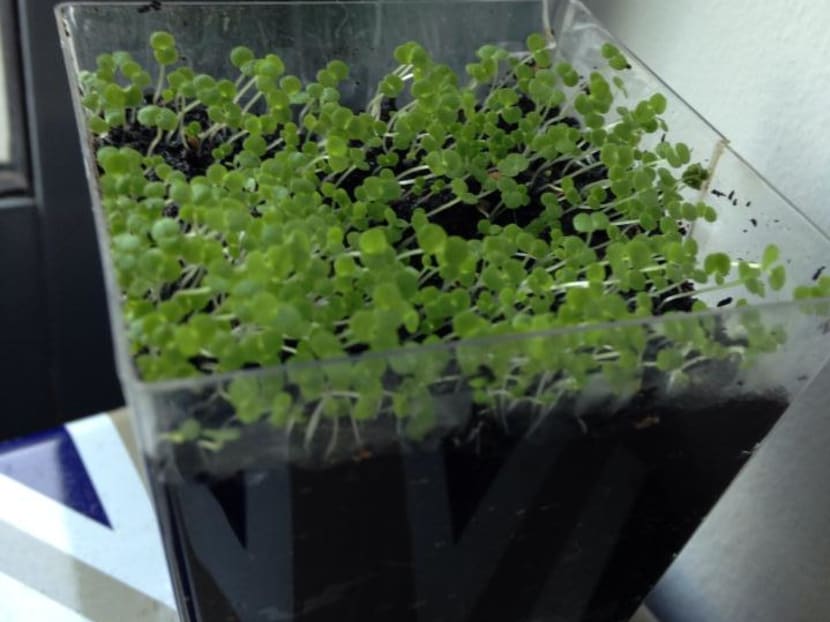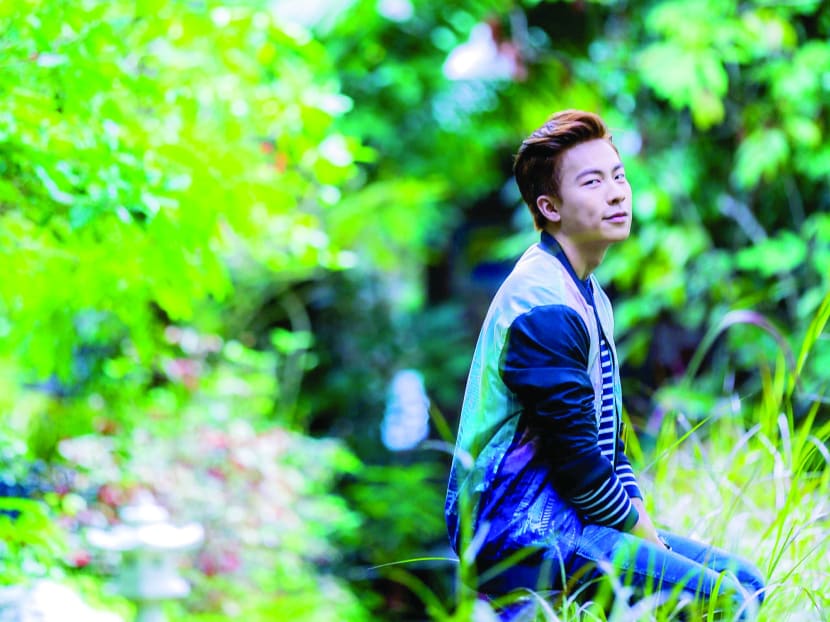Farming your own food
SINGAPORE – If you’ve watched Jamie Oliver cavalierly plucking herbs from little pots in his kitchen and throwing them into his saucepan, then you’ve probably thought about how nice it would be to grow your own organic ingredients so they’d be ready to be freshly harvested whenever you needed them.






SINGAPORE – If you’ve watched Jamie Oliver cavalierly plucking herbs from little pots in his kitchen and throwing them into his saucepan, then you’ve probably thought about how nice it would be to grow your own organic ingredients so they’d be ready to be freshly harvested whenever you needed them.
You wouldn’t be alone. Urban farming, in fact, is all the rage – you know, tending little pots of basil or attempting to raise your own broccoli. Eng Ting Ting, one of the founders of urban agriculture company Easi Garden, has observed a “growing interest” in the practice, and attributes it to people becoming “more conscious about what they put into their tummies”, especially as they are increasingly well-travelled. “Cities like New York, Tokyo and Hong Kong have been doing it for a long time,” she said. And these days, “young parents want their children to be exposed to nature and learn about it. Schools are also encouraging it. Many schools and restaurants are converting their ornamental gardens into edible ones. Restaurants find it a selling point – farm-to-table is very trendy”.
One person who has embraced the hobby is actor-singer Nat Ho, who earned himself the nickname “Farmer Ho”, thanks to his off-the-beaten-track pastime of HDB flat gardening.
“Dawn Yeoh was the first one to give me that nickname,” said the Tanglin actor, who cultivates his own cherry tomatoes, chye sim, chilli and mint in his apartment. “It seems like such an ah pek thing to do, right? But I was telling my friends about it and some of them actually started their own gardens, too.”
The hobby “started at a time when I was feeling really stressed,” Ho said. “I read online that gardening is good for the soul — relaxation and all that stuff. Singapore is such an urban jungle so I think there is a very conscious decision to go back to nature, even if it’s a tiny piece. It’s this kind of deliberate activity that makes you slow down and focus on something outside of yourself. Maybe, at this point, more and more people are trying to find meaning outside of the rat race.”
Philosophical reasons aside, the actor admitted he’s “greedy”. “I just wait for it to sprout so I can eat it,” he deadpanned. “I don’t like growing decorative plants. I want to grow plants I can actually use for cooking, whether it’s herbs or vegetables or fruiting plants. Since I’m going to look after them, I might as well get something out of it!”
ALL NATURAL
Take a leaf out of Farmer Ho’s notes who said the biggest harvests come from nature’s accidents, so don’t be afraid to stake it all on one seed.
“I have had the most luck with cherry tomato seeds, and it was completely random,” he recounted. “I was trying to grow basil, so every day, I’d go and check on my basil plant and see how fast it was growing. One morning, I was eating cherry tomatoes. There was a seed stuck in my tooth. So I was like, ‘Ah, I’m going to throw it in’. And it sprouted! I got two batches of cherry tomatoes. It wasn’t a lot – the first batch yielded one or two and the second about five – but for me, it was a huge accomplishment.”
Another “accident” is currently flourishing in his garden – he believes a bird deposited a seed into his chye sim planter. “Something else started growing in the pot, so I’ll just let it grow and see what happens,” he said. “I didn’t know what it was – it looked edible – so I snapped a picture of it and posted it in this Facebook group that I’m part of, Urban Farmers. The community is really helpful. They said, ‘I think this is chilli’.”
Ho’s takeaway is that stuff you grow yourself tastes better. “You know what went into it and it’s completely organic. Maybe because it’s super fresh, so it tastes better that way. Or maybe it’s just the psychological satisfaction of knowing I grew this.”
READY, SET, GROW
There are lots of resources and support systems out there if you’re interested in starting an edible garden. For people with limited time and space, the easiest plants to start with are microgreens, the young seedlings of edible vegetables and herbs such as radish or sunflower sprouts, which are delicious and nutritious, said Eng. They can be grown in trays, don’t need as much sunlight and can be harvested when they are very young. And they go really well in salads and pastas, or on pizzas.
If you have even less space and want to grow things in pots, herbs are the way to go. “But grow what you eat – don’t grow something because it’s fashionable, because the more of it you cut, the more lush it will become,” she said. “Consider what suits your lifestyle. If you like Thai food, you can grow Thai basil, kaffir lime, calamansi or lemongrass. If you like European and Mediterranean food, you can grow thyme, oregano, rosemary, sweet basil or sage.”
Other considerations are sunlight, soil and water. “Most plants need at least six hours of direct sunlight,” Eng said. Plants such as chilli and basil grow very weak without sunlight and become vulnerable to pests and fungus. Mint, on the other hand, can tolerate less sunlight. Don’t buy cheap soil because it usually contains clay and construction debris, causing poor drainage. She recommends mixing your soil with lightweight compost.
And when it comes to watering your plants, it’s always better to underwater than to overwater, she said. “Some Mediterranean herbs like rosemary and thyme grow in sandy environments with little rain. You have to follow that environment. A lot of people bring these plants home from the nursery and kill them within a week because they water them every day.” As a general rule, if your plant’s leaves are very small and pointy and it has woody stems, it doesn’t require a lot of water. If the plants are fleshy with soft stems, like mint and basil, they should be watered at least twice a day – thrice, if the weather is very hot.
Lastly, “another thing people forget is that plants need food,” she said. Fertiliser should be used every three weeks or so, especially for vegetables.
Lest it’s all a little overwhelming and you think gardening is only for people blessed with green thumbs, you can always look to Ho as a role model. At the age of 11, he killed his first plant – a cactus – by not giving it enough water. His second cactus was a victim of his overcompensation and suffered death by overwatering.
Even now, his standards are low. “Basically, as long as it stays alive, it’s doing well,” he laughed.
But, “I think as with everything else in life, the trick is just to keep trying until you’re successful. Each time you try, you change something up a little bit. It’s basically just experimenting. And there’s always the Internet, Google and YouTube.”







